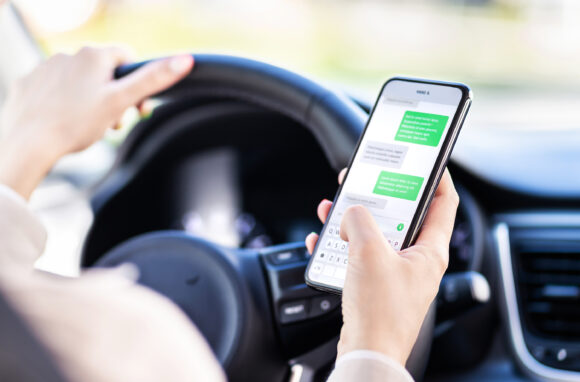A survey of passenger car and commercial drivers finds that distracted driving is still a significant safety issue, according to a recent survey by insurance carrier, Nationwide.
The new latest driving behaviors survey revealed additional risky behaviors impacting all drivers on the road.
About one-third of commercial drivers admitted they sometimes or often feel distracted behind the wheel and this is supported by the 6 in 10 who agree that other commercial drivers are looking at their phones more often and driving faster than they did a year ago.
The survey found the top causes of distractions for commercial drivers are:
- 55% using GPS/Nav systems
- 36% responding to work text messages
- 27% texting/talking on mobile phones
- 13% checking social media apps
Commercial drivers may be feeling pressured by their employer to make tight timelines, causing potential distractions while behind the wheel, according to Nationwide.
Nearly all drivers (90%) say it is dangerous to hold a phone in their hand while driving, whether to talk, text or navigate.
But drivers tend to blame others, the survey found, with 8 in 10 rating their driving as ‘very good’ or ‘excellent,’ compared to other passenger cars on the road (14%) or commercial vehicles (25%).
Most everyone (92%) surveyed agreed that driving has become more dangerous, reporting other drivers are more often looking at their phones.
“Nationwide’s telematics driving data shows that drivers take their eyes off the road at least 12 times per day. The average distraction for a driver traveling at 45MPH would cover the length of three football fields! States with hands-free laws are helping to minimize distraction, but we need all 50 states to adopt hands-free laws to continue to reduce crashes and save lives,” said Kelly Hernandez, AVP of Nationwide’s personal telematics.
Many states are exploring Hands Free legislation as a way to curb distracted driving.
Eighty-nine percent of respondents support laws or legislation in their state to prohibit drivers from holding their cell phones while talking or manually using their cell phones to text, email or look at anything on their phones while operating a motor vehicle.
Twenty-six states and Washington D.C. have hands-free laws in place, leaving 16 states with no laws prohibiting handheld cell phone use while behind the wheel, Nationwide found.
Eight states need to strengthen their laws to primary, all driver hands-free laws, the insurer added.
As an example of the benefits of hands-free legislation, Ohio passed its legislation in 2022 and saw a 16% reduction in distracted driving-related accidents in the first nine months of 2023. Over the same time period, distracted driving fatalities also declined by nearly 25%.
Was this article valuable?
Here are more articles you may enjoy.


 Class Action Lawsuit on AI-Related Discrimination Reaches Final Settlement
Class Action Lawsuit on AI-Related Discrimination Reaches Final Settlement  T-Mobile Caught Hackers Early, Averting Data Leak
T-Mobile Caught Hackers Early, Averting Data Leak  Verisk: A Shift to More EVs on The Road Could Have Far-Reaching Impacts
Verisk: A Shift to More EVs on The Road Could Have Far-Reaching Impacts  T-Mobile’s Network Breached as Part of Chinese Hacking Operation
T-Mobile’s Network Breached as Part of Chinese Hacking Operation 